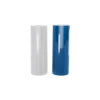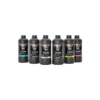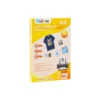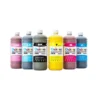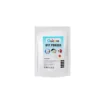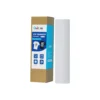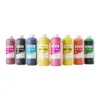Why You Shouldn’t Cure DTF Powder With Heat Press
Although heat presses are commonly used in the DTF workflow for transferring prints onto garments, they are not designed to cure adhesive powders. Using a heat press for this step can lead to inconsistent results and damage to the print or printing substrate.
Hot Presses Can Cause Melting Transitions
A heat press applies pressure and direct heat from above, but does not distribute the heat evenly over the surface of the film. This may cause some of the powder to melt excessively, resulting in inconsistent transfer quality. Normal heat press transfer temperatures range from 145-165 degrees Celsius (for T-shirts, for example). While the melting temperature of hot melt powder is between 100-110 degrees Celsius (take regular PU powder as an example).
The most common problem encountered when using a heat press is that the powder is not baked smooth enough and it is easy for the surface to become more rough. Please read: Why Is DTF Powder Uneven or Not Smooth After Baking?
Powder May Stick to the Heat Press Plate
When using a heat press directly to cure powder, the powder may heat up and stick to the upper platen. Not only will this cause impurities in the hot platen, but it may also contaminate future transfers and damage the machine over time.
It’s Not Designed for Pre-Curing
Heat presses are built for final transfer applications, not for powder curing. They lack a circulating heat system, which means they cannot ensure consistent melting of the powder on complex or large designs. As a result, you’re more likely to experience adhesion issues and reduced image clarity.
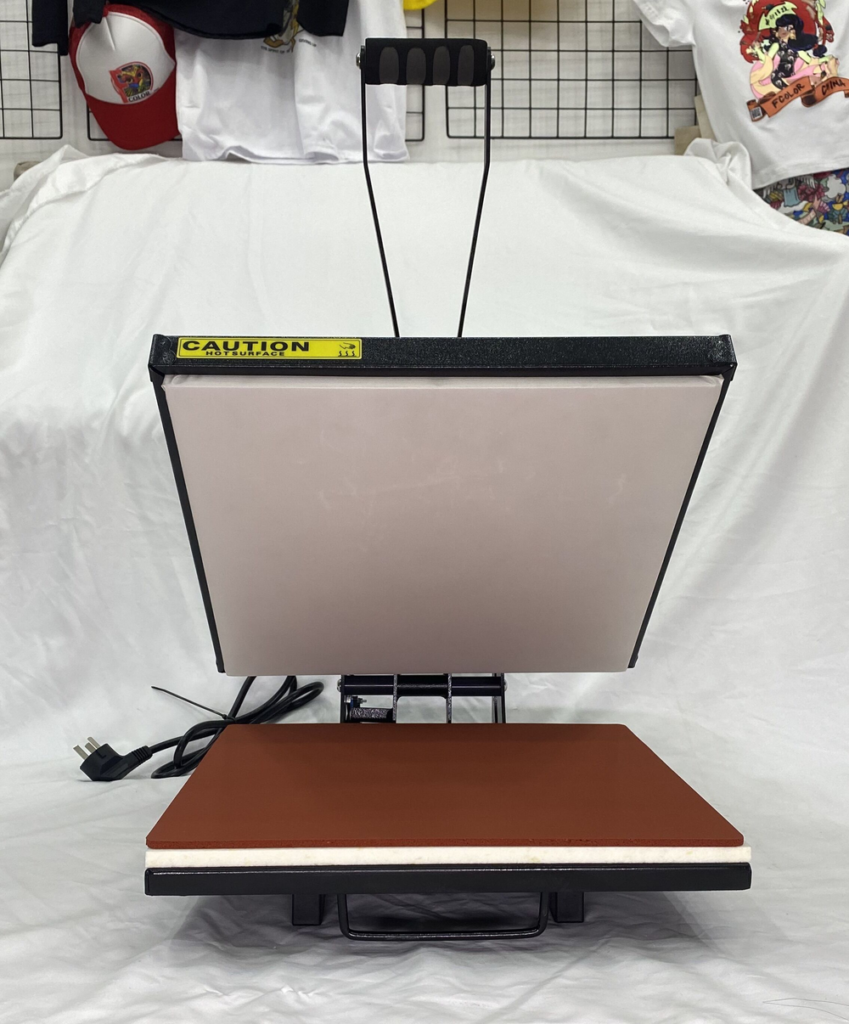
Why a DTF Oven is Better to Cure DTF Powder
A DTF oven is specifically designed to pre-cure adhesive powder evenly and efficiently. It uses hot air circulation rather than direct contact, which provides more reliable results and protects the integrity of the transfer film.
Provides Even Heat Distribution
DTF ovens feature internal fans or convection systems that circulate heat uniformly. This ensures that every part of the powder-coated film receives the same temperature treatment, resulting in a fully melted and glossy adhesive layer ready for transfer.
Allows for Batch Processing
Unlike a heat press that cures one film at a time, DTF ovens can cure multiple films simultaneously. This dramatically improves workflow and productivity, especially for small businesses handling multiple orders per day.
Better Control Over Temperature and Time
DTF ovens allow users to set precise temperature and time settings depending on the type of powder, film, and ink used. This flexibility helps achieve consistent curing without risking overheating or under-curing, which can compromise the final print.
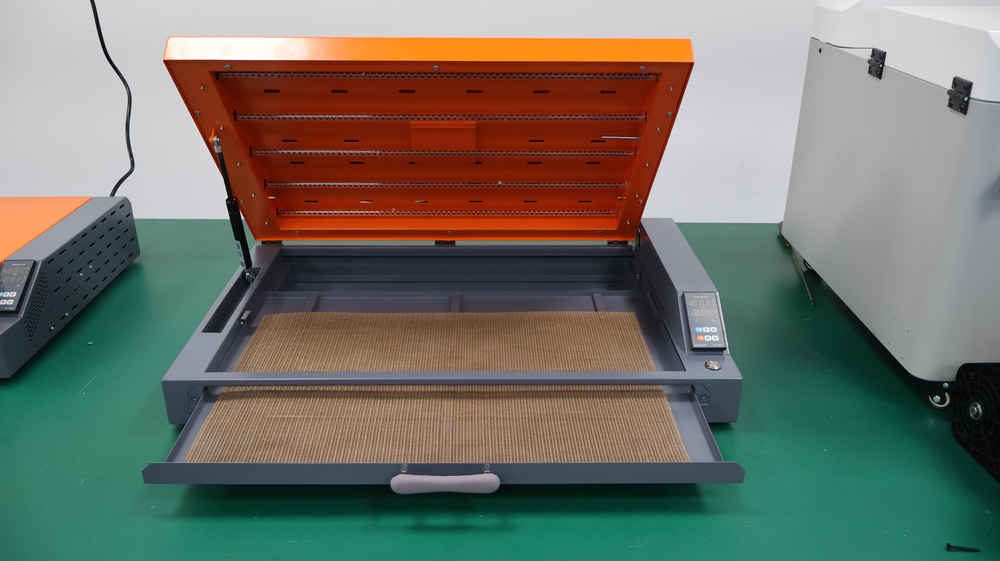
Comparing this picture to the previous one, you can clearly see that the DTF oven is hollowed out in the middle, while the heat press is full coverage contact. Subtle differences like this can have a big impact on curing powder.
See also: How To Cure DTF Powder With Oven?
Common Issues When You Try to Cure DTF Powder With Heat Press
Relying on a heat press to cure DTF powder may seem convenient, but it introduces several quality and operational risks. Understanding these issues can help you avoid costly mistakes.
Overheating Leads to Ink Blurring
When using a heat press to cure powder, too much heat or too long a period of time can cause the ink to spread or distort. The reason for this phenomenon is because of the powder, and the spreading produced by the powder indirectly affects the ink. This is not a case of the ink itself changing because of the high temperature. Especially on dark-colored fabrics, the transfer may appear blurred or smudged instead of a clean, crisp image.
Powder Doesn’t Fully Melt
Even if you adjust the temperature of the heat press to a temperature where the DTF powder can melt and cure, it doesn’t mean the powder will melt completely. Even if the temperature is high, the lack of airflow means that the adhesive powder may not melt completely, especially at the edges of the design. This incomplete cure can lead to poor adhesion and peeling after the first water wash.
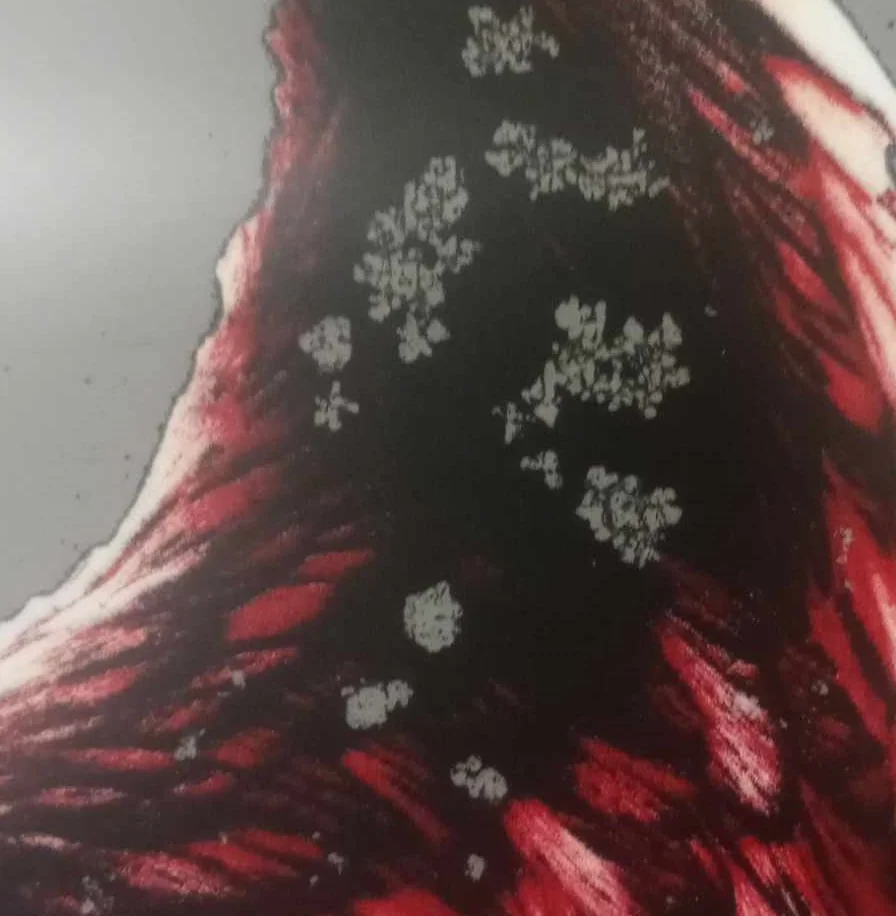
Destruction Of DTF Film Coatings
DTF film is a one time use product. If you use a heat press to cure the powder, that means the film encounters heat twice, which is devastating to the coating of the film. The fundamental reason why there are products like DTF ovens to solve the problem of melting DTF powder is because of the different nature of the contact. The film can withstand high temperatures without contacting the coating, but not all the time when it is in contact with the coating.
Recommended Method to Cure DTF Powder Properly
For professional-quality results and to avoid common defects, it’s best to follow a powder curing process specifically designed for the DTF printing process, using a dedicated DTF oven.
Use a DTF Oven Set to the Right Temperature
The ideal temperature range for most DTF powders is between 110°C and 130°C (230°F to 266°F). You should cure the powder for approximately 2 to 5 minutes depending on the thickness of the powder layer and environmental conditions. Make sure to follow the manufacturer’s instructions for best results.
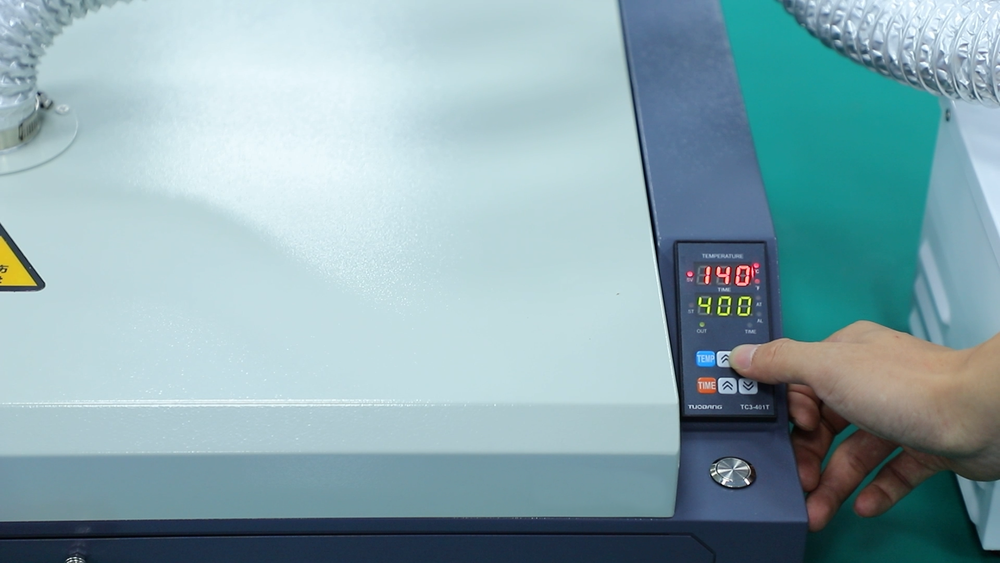
Observe the Powder During the Curing Process
A properly cured powder should appear melted and glossy but not bubbling or burnt. Keep an eye on the film as it cures; once the powder turns into a smooth, shiny adhesive layer, it’s ready for the next step. Monitoring this visually helps avoid over-curing.
Choosing the Right Powder
The right powder isn’t about brand or price; it’s about your usage habits. Powder ovens have a lifespan, and sometimes aging can prevent the powder from curing properly. When that happens, replace it. Don’t try to tweak it until it’s just functional, as this will lead to more inexplicable issues.
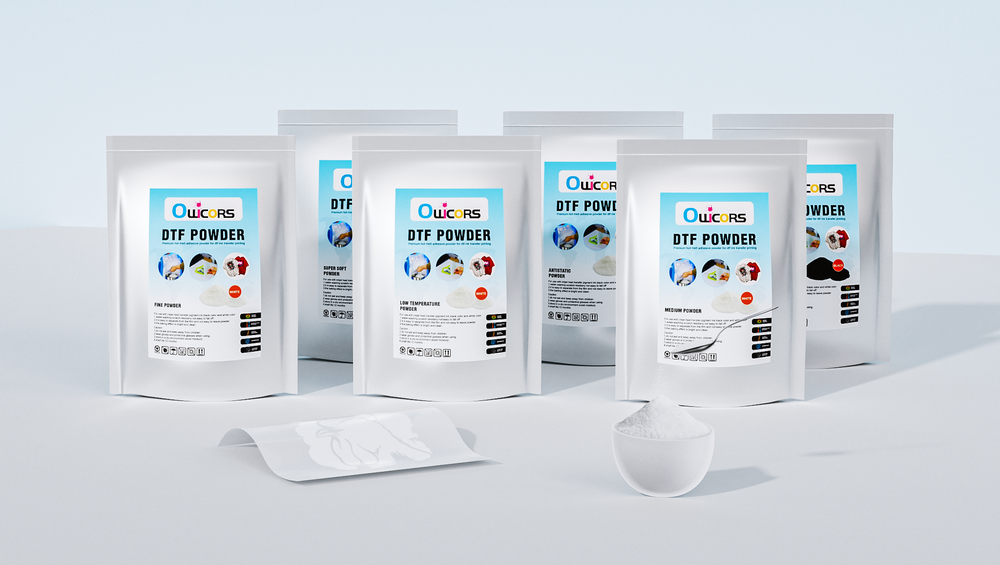
Conclusion
While a heat press may seem like a convenient tool, it’s not suitable for curing DTF powder. For consistent, high-quality results, using a dedicated DTF oven is the smart and professional choice. It ensures even curing, protects your prints, and improves overall efficiency.

